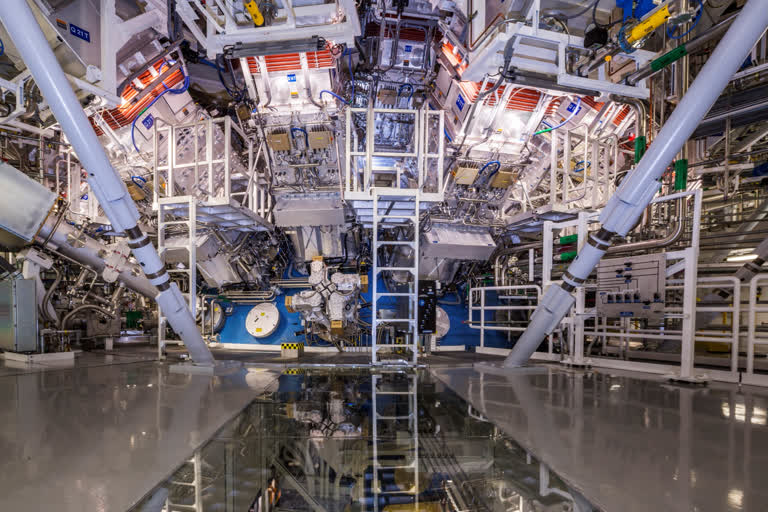Hyderabad: Human intelligence has reached a crucial milestone towards finding a miraculous solution for the two major problems faced by the world, global warming and scarcity of energy. A historic moment unfolded after the successful launch of nuclear fusion on the planet, which provides light to the stars. It was made possible by decades of efforts put in by scientists.
What is nuclear fusion? The Sun and other stars release energy through nuclear fusion. The light hydrogen atoms combine to form the heavy element helium and immense energy is released in the form of light and heat in this process. This is the source of solar light and heat.
- But it is very difficult to combine two identical atoms because they have the same charge, and as two charged edges in batteries repel each other, these also do not meet. The atoms only meet under unusual circumstances.
- Fusion is possible in the sun's core due to the huge temperature levels (millions of degrees Celsius) and pressure (100 billion times greater than Earth's atmosphere). Due to Sun's extraordinary gravitational force, such conditions are created naturally.
- Fusion processes take place in extremely hot plasma. It contains charged ions and freely moving electrons and its properties are different from solid, liquid and gas.
The current progress: Researchers at the National Ignition Facility (NIF) of the Lawrence Livermore National Lab in California, USA, achieved a key milestone called 'Fusion Ignition' on December 5, 2022. The production of more energy expended in the fusion process is called 'Fusion Ignition'.
In NIF, a small amount of fuel containing Deuterium and Tritium is placed in a capsule. In all, 192 lasers are used for this and their beams can heat up to 10 million degrees Celsius and exert pressure 100 billion times greater than the earth's atmosphere.
- X-rays are produced when the laser beams hit the capsule. They subject the fuel to temperatures of millions of degrees Celsius and extreme pressure. As a result, the conditions that exist in a star for a short period have been discovered.
- After this experiment, the scientists examined the ratio of the energy released in the fusion process and the energy used by the lasers. This is called 'Gain'. If it is greater than 1, more energy is released in the fusion process than is consumed by the lasers.
- Lasers with an energy of 20 lakh Joules were applied to the fuel in NIF. All this happened in a billionth of a second. As a result, 30 lakh joules of energy were released. That is, the gain is 1.5. Thus, there has never been a record of more energy produced than consumed before this.
- In the NIF experiment, less fuel than a pea seed was used. The energy generated by this is sufficient to heat 15-20 kettles used for brewing tea.
The 'Fusion Process' is different from 'Nuclear Fission Reactors' currently used to generate electricity.
- Atoms are broken in Nuclear Fission Reactors. Hazardous radioactive materials are released in this process. They have to be stored in a safe place for hundreds of years.
- The waste produced in Fusion Process is less radioactive and deteriorates quickly. Fossil fuels like oil and gas, which are responsible for greenhouse emissions, are not used in the Fusion Process, which emits Helium, a non-poisonous inert gas.
- It is difficult to initiate and sustain Nuclear Fusion, therefore it is unlikely to get out of control. The process includes a 'Self-Regulatory Mechanism', where if the operators are unable to control the action, the machine switches it off. Once the action stops, the plasma loses its energy very quickly, shutting down the reactor before any damage is done to it.
